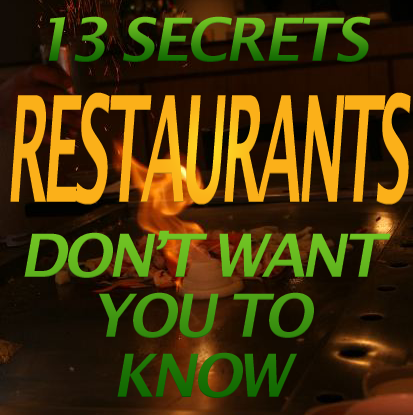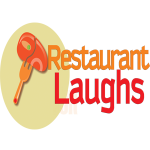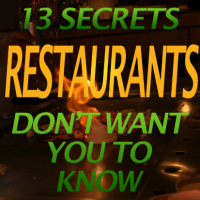 I am often asked by friends and in interviews what are the restaurant secrets they should know about before dining out. This usually causes a chuckle. I eat out as much as anyone I know. After working in over a dozen restaurants, I don’t feel enough fear to avoid them. The cooks will not mess with your food if you send it back. The restaurant isn’t serving spoiled food. We are not secretly conspiring to empty your wallet, steal your wife, or seduce your daughter. We want you to have a great time, tell your friends, and come back to see us again soon. I wouldn’t really call this an ulterior motive. We are generally quite up front about this agenda.
I am often asked by friends and in interviews what are the restaurant secrets they should know about before dining out. This usually causes a chuckle. I eat out as much as anyone I know. After working in over a dozen restaurants, I don’t feel enough fear to avoid them. The cooks will not mess with your food if you send it back. The restaurant isn’t serving spoiled food. We are not secretly conspiring to empty your wallet, steal your wife, or seduce your daughter. We want you to have a great time, tell your friends, and come back to see us again soon. I wouldn’t really call this an ulterior motive. We are generally quite up front about this agenda.
The reality is that we all want value when we go to restaurants. If you want your entrée to be less than $20, there are some sacrifices that must be made. To get that entree under $10, you should probably not expect to find a chef in the kitchen and re-evaluate what you mean by the word “freshâ€.   There are probably restaurants where none of these secrets hold true. You can spot them by the strong recoil you make when you see the prices on the menu. There is a price tag that comes with value. These are 13 ways that restaurants deliver value, but might make you think differently about the food you eat.
1)     “Housemadeâ€: Most restaurants that say they make their own bleu cheese or ranch dressings simply add a few ingredients to store bought dressings. Most “aiolis†are made by adding flavors to mayonnaise. In fact, people would be amazed at how much mayo is used in nicer restaurants. Things like honey mustard dressing are primarily mayo. While many other sauces, including buffalo wing sauce, are mostly butter.
2)     “Freshâ€: A very relative term.  It can often mean “never frozen†or recently brought into the restaurant. It just sounds good. Likewise “prime steaks†do not always mean USDA Prime graded and “lobster†can mean langostinas and langostas which bear little resemblance to lobsters beyond the tail.
3)     “Of The Day†The soup of the day is the soup of until we run out of it. Today’s special is often made of yesterday’s leftovers. It is important that we stretch every item as far as we can to maintain profitability.
4)      “Grass-fed beefâ€, “Top of the boat fishâ€, “Wild caught fishâ€, etc: These are often true, but when there is no way of verifying, it is really up to the restaurant to be honest. It is all too common for a server to slide the adjectives into a description.
5)     Servers are often prohibited from saying a menu item is not good. They are sometimes even required to push certain items. If you want their real opinion, you should ask, “what is your favorite.â€Â Never ask what is good, because many corporate restaurants mandate the response, “everything.â€
6)     Restaurant kitchens are often very cramped hot spaces and rarely look like they do on TV. They are chaotic, loud, and full of people shouting. While not every chef is as gruff as the ones on TV, many are far worse.
7)     In chain restaurants the push is towards simplicity and consistency. You will often see a bank of microwaves with color coded dots corresponding to the color of the dots on a package. This allows them to be able to hire anyone that will work for the wage they offer.
8)     Many of the items you think are prepared by a chef are actually made by your server. Salads and desserts are often the responsibility of a server. This is because in 44 states the server wage is less than the minimum wage. The federal minimum wage for servers is only $2.13 an hour and has been since 1991. This helps keep menu prices low by preventing the restaurant from having to pay someone $8-$15 an hour to do the same task,
9)     I don’t think food that makes it to the guest is “recycled†that often. The rule I was taught is that if it “goes below the nose†it is trash. It may however be “repurposedâ€. Tonight’s prime rib might be tomorrow’s French dip. The fish special that doesn’t sell can be seafood stew the next day. Once food makes it to the table, it is considered contaminated.
10)  Specialty cocktails that claim to have premium liquors will often be made with the cheap stuff if out of site of the guest. A jack and coke will always have Jack Daniels, but a cosmo might not be made with Absolut.
11)  I would never eat any garnish that came on a cocktail. They are often left to sit on a bar without refrigeration for the entirety of a shift and used again the following shift.
12)  I would never drop a lemon wedge in my iced tea or water. I am not sure where between the tree and glass people think they get washed, but it doesn’t happen in a restaurant.
13)  If there is something I think most people would find scandalous about the restaurant industry it is how often the person serving and preparing your food is sick. Nearly all positions don’t offer health insurance. There are no paid sick days and calling in sick is unacceptable. There have been some great studies done on this recently.
Quite frankly number 13 is the one that does scare me. It is far and away the biggest cost cutting measure in a restaurant. Providing health insurance for their staff is a thought that keeps restaurant owners up at night. The pressure from the guests to provide value is the root cause of everything on this list. The first dozen items will probably not lead to you becoming ill. Number 13 virtually guarantees that you will get sick dining out at least once in your life. For all the restaurant myths, both real and imagined, this is the one that we should all be worried about and demand action on.




No comments yet.